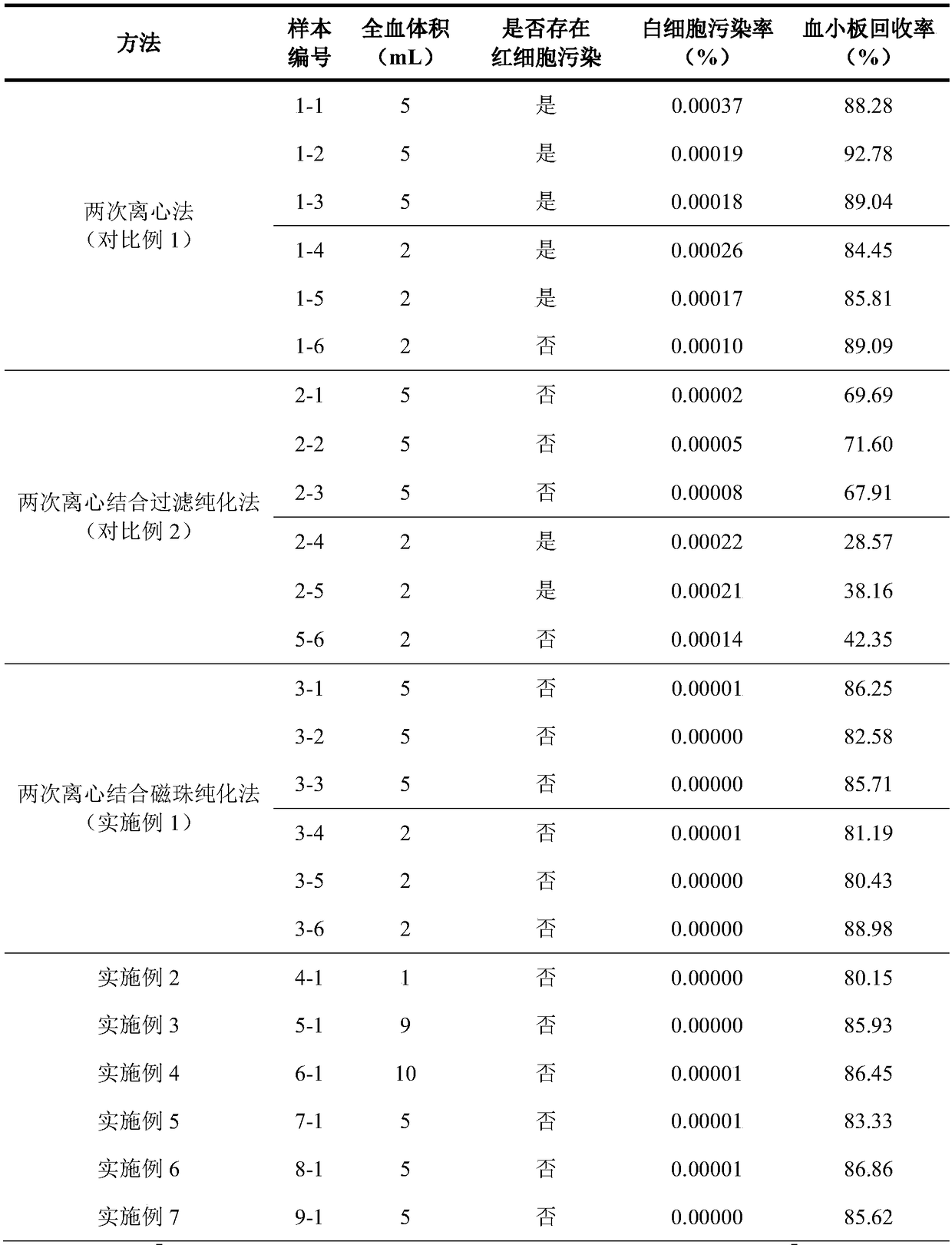Separation method of hyperpure platelets
A separation method and platelet technology, applied in the fields of medicine and biology, can solve the problems of reducing white blood cell retention, low overall pass rate, and contaminating platelet RNA, etc., to achieve the effect of avoiding background noise
- Summary
- Abstract
- Description
- Claims
- Application Information
AI Technical Summary
Problems solved by technology
Method used
Image
Examples
Embodiment 1
[0042] Example 1: Separation of ultrapure platelets by double centrifugation combined with magnetic bead purification
[0043] Whole blood sample collection: Use BD dipotassium EDTA blood collection tube to collect 2mL of venous blood from the subject, gently invert the blood collection tube several times after collection, so that the anticoagulant and whole blood can be fully mixed, and the whole blood should be processed within 96 hours after collection .
[0044] The first centrifugation: put the blood collection tube into the centrifuge rotor, centrifuge at 60×g for 30 minutes at room temperature, use a pipette to absorb 600 μL of platelet-rich plasma in the upper layer, and transfer it to a new 1.5mL centrifuge tube. The absorption process is as gentle as possible , to avoid stirring the middle buffy coat layer, causing white blood cells to float up and increasing the contamination rate.
[0045] Magnetic beads pre-treatment: CD45 immunomagnetic beads (Invitrogen, 11153D...
Embodiment 2
[0054] 1 mL of venous blood was collected from the subject, and the operation steps were the same as in Example 1. The results are shown in Table 1.
Embodiment 3
[0056] 9 mL of venous blood was collected from the subject, and the operation steps were the same as in Example 1. The results are shown in Table 1.
PUM
| Property | Measurement | Unit |
|---|---|---|
| volume | aaaaa | aaaaa |
| volume | aaaaa | aaaaa |
| volume | aaaaa | aaaaa |
Abstract
Description
Claims
Application Information
 Login to View More
Login to View More - R&D
- Intellectual Property
- Life Sciences
- Materials
- Tech Scout
- Unparalleled Data Quality
- Higher Quality Content
- 60% Fewer Hallucinations
Browse by: Latest US Patents, China's latest patents, Technical Efficacy Thesaurus, Application Domain, Technology Topic, Popular Technical Reports.
© 2025 PatSnap. All rights reserved.Legal|Privacy policy|Modern Slavery Act Transparency Statement|Sitemap|About US| Contact US: help@patsnap.com

